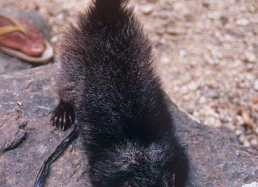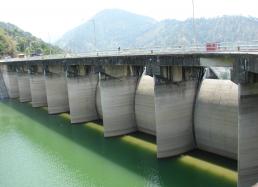Threats to Biodiversity
The Philippines are home to hundreds of animal species unique to these islands. But there is another reason to study biological diversity here. When conservation biologists list the countries with the largest number of species threatened with extinction, the Philippines ranks among the top ten.
When you consider the relative size of these countries, the Philippines often rises to the very top of the list. Currently, 51 mammal species that are endemic to the Philippines—a country about the size of the state of New Mexico—are on the list of endangered species. By comparison, in Australia, which is more than 25 times the size of the Philippines, 64 mammal species are endangered. Acre-for-acre, the Philippines may have the most seriously threatened flora and fauna on Earth.
Threats Facing Philippine Forests
The causes of endangerment are complex, but some of the primary reasons are:
a. A very dense population of humans (over 90 million citizens), many of whom are subsistence farmers
b. Extremely poor management of logging and agricultural practices
c. Extensive mining of steep mountain slopes
The overall result has been that the Philippines, once clothed in rainforests over at least 95% of its land surface, now has only about 8% of the original rainforest remaining, with perhaps another 12-15% covered by second-growth forest. This places the Philippines near or at the top of another list—that of the most severely deforested tropical countries in the world.
The Human Costs
Plants and animals aren't the only ones dependent on rainforests. For the Philippine people, these woodlands ensure a supply of clean water, protect low-lying areas from flooding during typhoons, and provide wild game, medicinal plants, recreation, and ecotourism.
Loss of rainforests not only depletes resources, but also causes drought, infertile soil, and intense erosion and siltation, which shortens the lifespan of hydroelectic dams that supply entire regions with power and water for irrigation. In addtion, deforestation also intensifies storms associated with the El Nino effect, which has resulted incredibly high human mortality rates due to devastating floods.
Beyond the direct costs of damage caused by deforestation, the indirect costs from reduced income can be great as well. Without soil, agricultural efforts cannot be resumed for 25 to 50 years, demonstrating that logging produces net loss, not net benefit. Resulting siltation enters the water supply killing fish and corals, which negatively impacts both the fishing and ecotourism industries—big business for many in the Philippines.
Hope for the Future
Plotting a corrective course for a country with such severe social and environmental problems is an enormous challenge. However, many aspects of the decline that began long ago have been either reversed or at least slowed through the efforts of The Field Museum's Philippine Mammal Project and many other organizations and institutions.
Obtaining new information on the conservation status of the wildlife and their habitats, providing current and accurate information about habitat management and conservation to government agencies at the national and local levels, and educating the public about the spectacular animals that live around them so that people will be more strongly motivated to promote conservation have all helped to rejuvenate the forests and preserve one of the most endangered ecosystems in the world.



